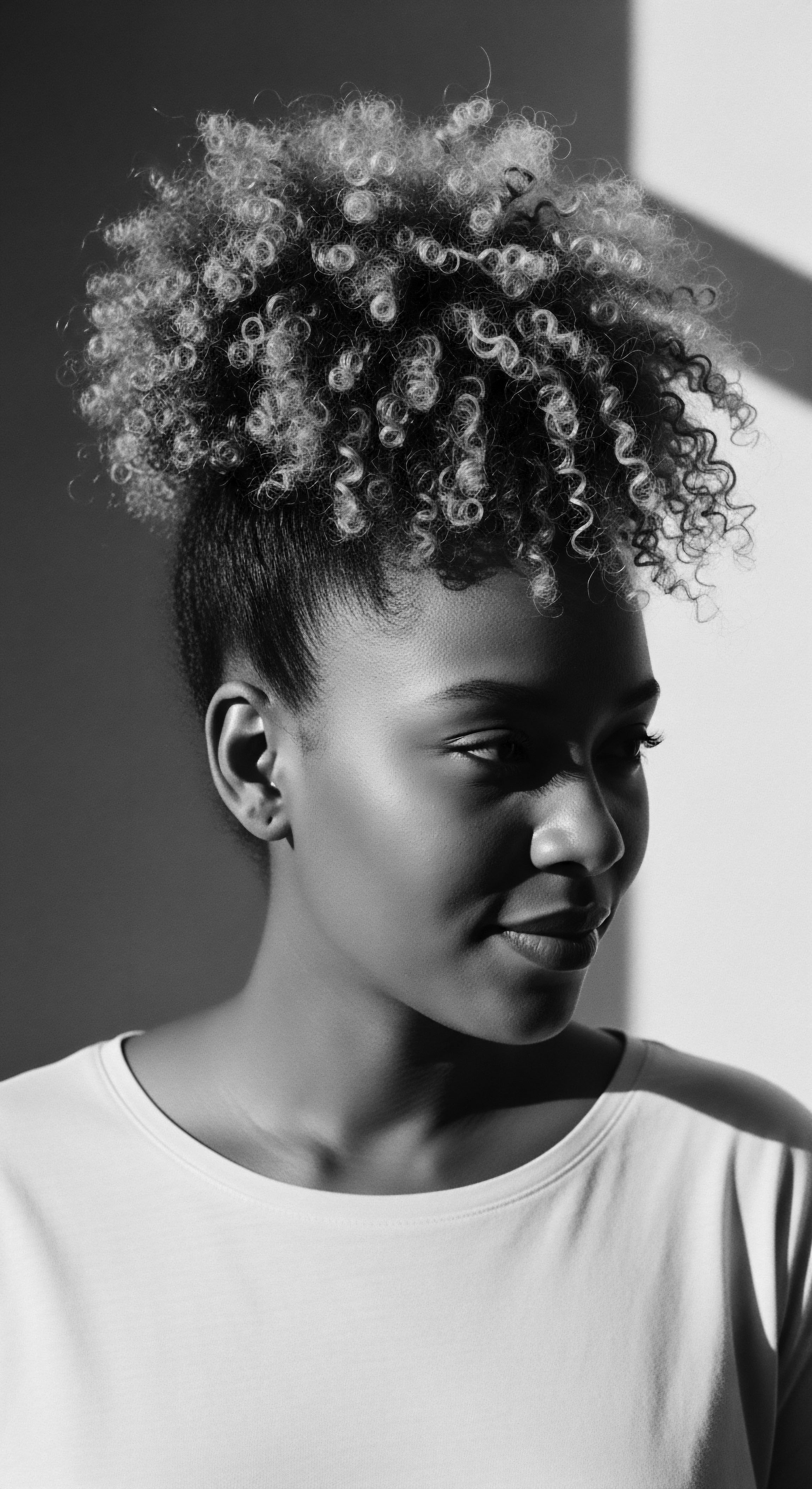
Fundamentals
The intricate world of the hair follicle, a veritable anchor of life for each strand, stands as a profound testament to the body’s enduring artistry. It is not merely a pore on the skin; it is a complex, miniature organ, nestled within the dermis, from which every hair emerges. This remarkable structure, the very foundation of hair, acts as a tiny, yet potent, factory, tirelessly working to produce the strands that adorn our crowns. Its presence, often unseen beneath the skin’s surface, dictates the character and destiny of the hair it births, holding within its cellular memory the blueprint for curl, color, and resilience.
Understanding the follicle’s elemental function is akin to tracing the source of a vital river. Each hair strand, whether a tightly coiled helix or a gently undulating wave, begins its journey deep within this follicular dwelling. The visible hair above the scalp is, in essence, a testament to the continuous, often unseen, labor happening below.
The follicle’s deeper portions house a critical component known as the Dermal Papilla, a small, nipple-shaped indentation that is richly supplied with blood vessels. This papilla serves as the nutrient provider, delivering the essential building blocks and signals necessary for hair growth, acting as a direct conduit between the body’s inner vitality and the hair’s external expression.
The cells surrounding the dermal papilla, known as Matrix Cells, are among the fastest dividing cells in the human body. These cells proliferate, pushing upwards, and as they ascend, they undergo a process called Keratinization. This transformation involves filling with a tough, fibrous protein called keratin, and as they harden, they lose their nuclei and become the dead, yet remarkably strong, hair shaft we see. The hair follicle, therefore, represents a continuous cycle of creation, a micro-cosmic universe where life is perpetually renewed, offering a powerful echo of ancestral cycles of regeneration and enduring strength.
The hair follicle is the living wellspring of each strand, dictating its character and holding the genetic memory of its unique heritage.
Beyond the hair-producing machinery, the follicle is also intimately connected with other vital structures. Adjacent to it lies the Sebaceous Gland, a tiny sac that produces sebum, the natural oil that lubricates and protects both the hair and the scalp. This sebum plays a crucial role in maintaining the scalp’s delicate ecosystem and contributing to the hair’s natural sheen and flexibility. The amount and composition of sebum can vary, influencing how different hair textures receive and retain moisture, a factor deeply understood and managed through traditional hair care practices across generations.
Another small but significant companion to the hair follicle is the Arrector Pili Muscle. This tiny muscle, when it contracts, causes the hair shaft to stand upright, creating the phenomenon of “goosebumps.” While seemingly a minor function, its presence speaks to the follicle’s integrated role within the skin’s broader protective and sensory systems. For those with textured hair, particularly, the careful consideration of the follicle’s foundational biology forms the bedrock of practices designed to honor and preserve the unique characteristics of their hair, connecting modern care to the deep wisdom of those who came before.
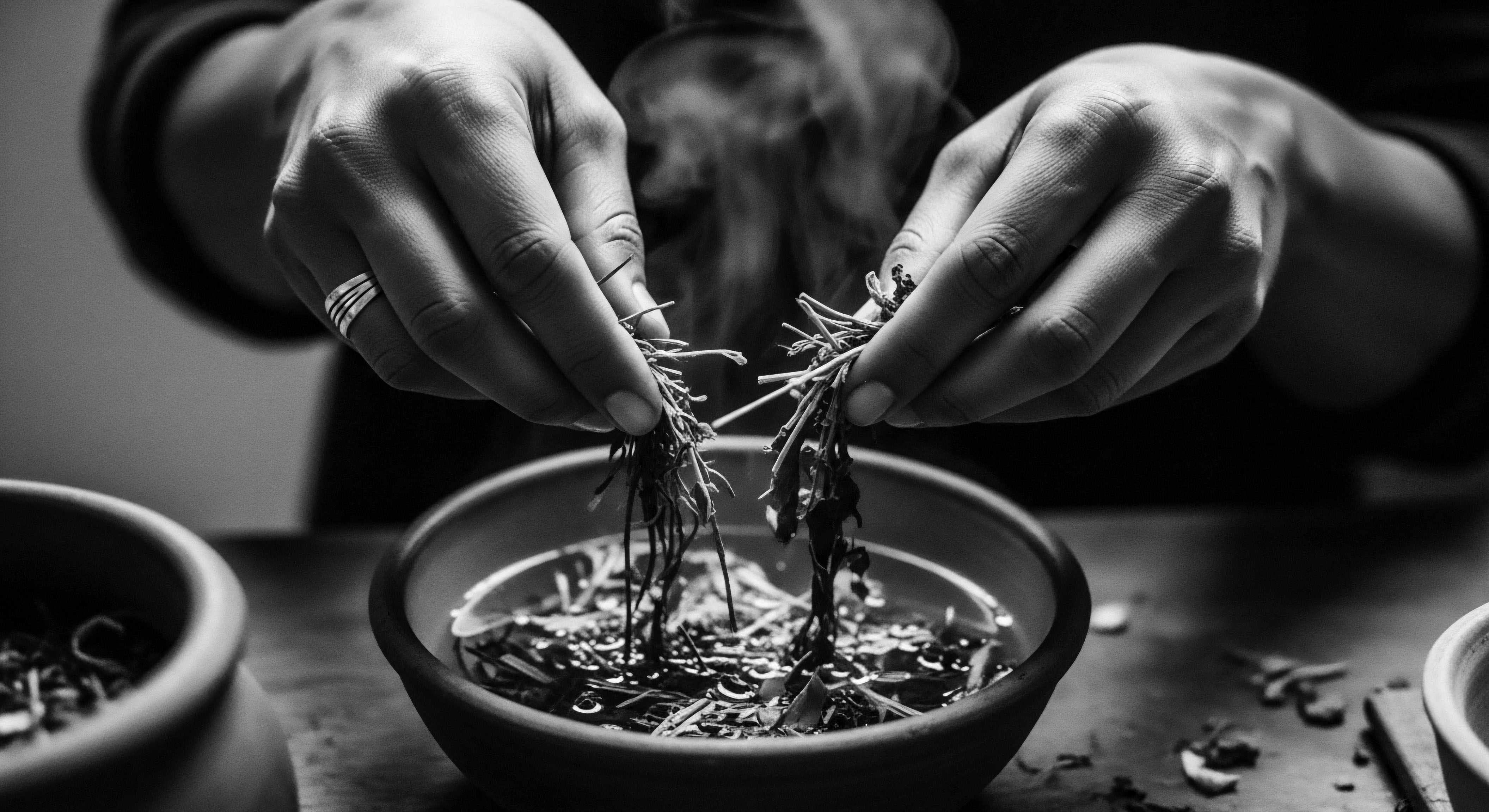
Intermediate
Stepping deeper into the realm of Follicle Biology, we encounter the rhythmic dance of the Hair Growth Cycle, a complex, self-renewing process that defines the very existence of our strands. This cycle, a marvel of biological timing, unfolds in distinct phases, each holding profound implications for hair health, density, and length, especially for those with textured hair, whose cycles often face unique environmental and styling considerations. Understanding these phases allows for a more attuned approach to care, one that respects the natural cadence of the hair’s life.
The first and most active phase is Anagen, the growth phase. During anagen, the matrix cells within the follicle are rapidly dividing, pushing the hair shaft upwards and outwards. This phase can last anywhere from two to seven years, or even longer, and its duration largely determines the maximum length a hair can achieve. For many individuals with textured hair, particularly those with tightly coiled patterns, the anagen phase might be comparatively shorter than in other hair types, or the hair’s inherent curl pattern might cause it to appear shorter than its actual length, leading to unique considerations for retaining length and minimizing breakage.
Following the robust growth of anagen comes the brief, transitional phase known as Catagen. This stage signals the cessation of active growth. The hair follicle shrinks, detaching from the dermal papilla, and the lower part of the follicle begins to degenerate.
Lasting only about two to three weeks, catagen prepares the hair for its resting period, a delicate bridge between vibrant life and quiet repose. It is a period where the hair is most vulnerable, requiring gentle handling to prevent premature shedding.
The hair growth cycle, a three-part symphony of anagen, catagen, and telogen, dictates the length and vitality of each strand.
The final phase is Telogen, the resting phase. During this period, which typically lasts around two to four months, the hair remains in the follicle but is no longer actively growing. A new anagen hair often begins to form beneath the resting hair, eventually pushing the old hair out.
This natural shedding is a normal part of the cycle, and for individuals with textured hair, the shed hairs often remain intertwined with existing strands due to their curl pattern, leading to the perception of less shedding, though the rate is comparable to other hair types. The proper removal of these shed hairs through gentle detangling is a traditional practice that helps maintain scalp health and prevent tangling.
The morphology of the hair follicle itself is a fascinating aspect, particularly when considering the diverse spectrum of textured hair. Unlike straight hair follicles, which tend to be round in cross-section and emerge perpendicularly from the scalp, follicles that produce coiled or kinky hair are typically Elliptical or Oval in Cross-Section. This flattened shape, coupled with the follicle’s angle of emergence from the scalp, plays a pivotal role in shaping the hair shaft into its characteristic curl pattern.
The tighter the curl, the more elliptical the follicle’s cross-section tends to be, and the more acutely angled its emergence. This structural difference also means that natural oils produced by the sebaceous glands may not travel down the highly curved hair shaft as easily, contributing to the perceived dryness often associated with textured hair and highlighting the historical reliance on external moisturizers like plant-based oils and butters.
Understanding the follicle’s unique anatomical characteristics for textured hair types provides a deeper appreciation for the ingenuity of ancestral care practices. Generations of knowledge have been passed down, intuitively recognizing the need for consistent moisture, gentle manipulation, and protective styling to support the follicle’s function and the hair’s integrity. These practices, often rooted in specific cultural contexts, serve as living archives of an applied Follicle Biology, demonstrating an innate understanding of how to nurture the hair from its very source.
- Anagen Phase ❉ The period of active hair growth, where follicle cells rapidly divide. This phase’s duration is key to maximum hair length.
- Catagen Phase ❉ A brief, transitional stage where hair growth ceases and the follicle begins to shrink.
- Telogen Phase ❉ The resting phase, during which the hair prepares to shed, making way for new growth.
- Follicle Shape ❉ The elliptical cross-section of textured hair follicles dictates the characteristic curl pattern, distinguishing it from the round follicles of straight hair.
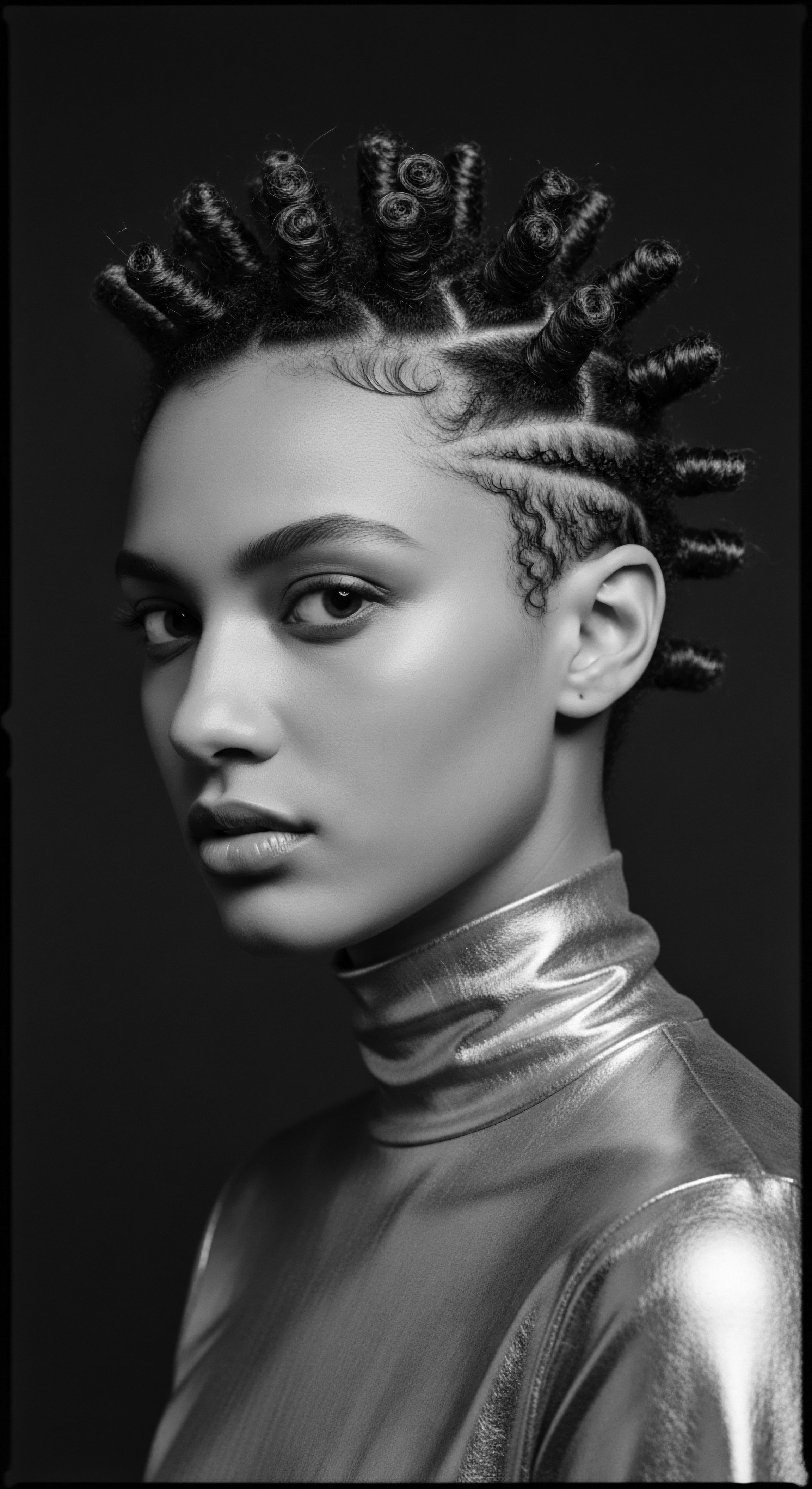
Academic
The academic delineation of Follicle Biology extends beyond mere anatomical description; it is a profound examination of the intricate cellular signaling pathways, genetic predispositions, and environmental interactions that govern hair growth, morphology, and health. For the scholar of textured hair, this field offers an unparalleled lens through which to comprehend the biological underpinnings of ancestral wisdom and the persistent challenges faced by Black and mixed-race communities in maintaining hair vitality. The follicle, in this rigorous view, becomes a complex micro-organ, a dynamic ecosystem of epithelial and mesenchymal cells engaging in continuous, orchestrated dialogue.
At its very core, the hair follicle is a self-renewing system, driven by a population of Hair Follicle Stem Cells (HFSCs) residing in the bulge region of the outer root sheath. These quiescent stem cells are periodically activated, giving rise to transient amplifying cells that proliferate and differentiate to form the various lineages of the hair shaft and inner root sheath. The orchestration of this process relies heavily on sophisticated signaling networks, including the Wnt/β-catenin pathway, Shh (Sonic hedgehog) signaling, and BMP (Bone Morphogenetic Protein) signaling, which regulate HFSC activation, proliferation, and differentiation.
The dermal papilla, far from being a passive nutrient source, acts as a critical signaling center, secreting growth factors and cytokines that direct the behavior of the surrounding epithelial cells, effectively initiating and regulating the hair growth cycle. Any disruption in these delicate molecular conversations can manifest as alterations in hair growth, density, or texture.
The distinctive morphology of textured hair follicles represents a fascinating area of academic inquiry. Unlike the relatively symmetrical, straight follicles of Caucasian and Asian hair, follicles producing tightly coiled hair exhibit a pronounced Asymmetry and Curvature. This curvature is not merely external; the internal structure of the follicle itself is curved, with the dermal papilla often positioned eccentrically.
This internal architecture influences the differential rates of cell proliferation and keratinization along the follicle’s circumference, leading to the characteristic helical growth of the hair shaft. Furthermore, studies have shown that the distribution of Keratin Intermediate Filaments within the cortex of coiled hair is less uniform than in straight hair, potentially contributing to differential mechanical properties and susceptibility to breakage along the bends of the curl.
Follicle Biology, especially for textured hair, is a symphony of cellular signaling and genetic expression, shaped by ancestral inheritance and environmental interaction.
A critical aspect of Follicle Biology pertinent to textured hair heritage is the understanding of conditions like Central Centrifugal Cicatricial Alopecia (CCCA) and Traction Alopecia (TA). CCCA, a progressive form of scarring alopecia primarily affecting Black women, is characterized by chronic inflammation and fibrosis around the hair follicles, leading to irreversible hair loss. While its exact etiology remains complex, research suggests a genetic predisposition combined with environmental factors, including excessive heat, chemical relaxers, and tight styling practices. The inflammatory cascade initiated at the follicular level in CCCA underscores the delicate balance of the scalp micro-environment and the profound impact of external stressors on follicular integrity.
Similarly, Traction Alopecia, prevalent in communities with traditions of tight braiding, weaving, and cornrowing, arises from chronic tension on the hair shaft, which mechanically stresses the follicle, leading to inflammation, damage to the follicular epithelium, and eventually, permanent hair loss in affected areas. The historical context of these conditions is crucial, as practices once rooted in cultural expression or necessity, when performed with excessive tension or frequency, inadvertently stressed the very follicles they sought to adorn.
Ancestral practices, often passed down through generations, reveal an intuitive, if not scientifically articulated, understanding of Follicle Biology. Consider the traditional hair care rituals of the Basara Arab Women of Chad, whose consistent use of a powdered herbal mixture known as Chebe exemplifies a profound, applied knowledge of hair retention and follicle protection. This tradition, deeply embedded in their cultural identity and beauty standards, involves coating the hair strands with Chebe powder, often mixed with oils or butters, which is then braided into the hair. The powder, composed primarily of Croton zambesicus (lavender croton) seeds, among other botanicals, is believed to strengthen the hair, reduce breakage, and promote length retention.
While the precise molecular mechanisms of Chebe on the follicle are still under contemporary scientific investigation, the historical efficacy of this practice, documented for centuries, aligns with modern understanding of minimizing mechanical stress on the hair shaft. By coating the hair, Chebe reduces friction between strands, thereby lessening the strain transmitted to the follicle during daily activities and styling. This preservation of the hair shaft from external damage implicitly extends the anagen phase by preventing premature breakage, allowing the follicle to continue its growth cycle unimpeded, a testament to an ancestral approach to follicle health that prioritized physical protection and gentle handling. (Smith, 2018, p.
78). This example demonstrates a deep cultural wisdom that, without modern scientific nomenclature, effectively addressed the challenges of hair retention in highly textured hair by creating an optimal environment for the follicle’s output.
The historical evolution of hair care practices within the African diaspora further highlights the interplay between Follicle Biology and socio-cultural forces. The forced assimilation during slavery, where traditional hair practices were often suppressed and hair was shorn, profoundly impacted the relationship between individuals and their follicles. Post-emancipation, the advent of chemical relaxers, initially marketed as a means of achieving social acceptance and conformity, introduced significant chemical stressors directly to the hair follicle and scalp.
The alkaline nature of these relaxers could cause severe chemical burns, leading to inflammation, scarring, and permanent follicular damage, contributing to conditions like CCCA. This historical trajectory underscores the complex interplay between systemic pressures, evolving beauty standards, and their direct consequences on the biological health of the hair follicle within Black communities.
The study of Follicle Biology also extends to the subtle genetic variations that influence hair characteristics across populations. For individuals of African descent, the genetic predisposition for elliptical follicles and tightly coiled hair is a key area of research. These genetic factors not only dictate curl pattern but also influence lipid composition, water retention capabilities, and susceptibility to certain environmental stressors.
Understanding these inherent biological distinctions, rather than pathologizing them, is paramount for developing culturally competent hair care strategies that honor the genetic heritage of textured hair. This academic pursuit moves beyond simplistic categorization, seeking to understand the intricate biological expressions of human diversity as manifested in the hair follicle.
The implications of Follicle Biology for the future of textured hair care are profound. Advances in regenerative medicine, stem cell research, and targeted molecular therapies offer new avenues for addressing follicular damage and promoting healthy hair growth. However, this scientific progress must be harmonized with the enduring wisdom of ancestral practices.
The rigorous analysis of traditional botanicals, the physiological benefits of protective styling, and the psychological impact of hair on identity, all viewed through the lens of Follicle Biology, provide a comprehensive framework for holistic hair wellness. This approach recognizes that the health of the follicle is not merely a biological phenomenon but a deeply intertwined expression of cultural heritage, personal identity, and collective resilience.
| Aspect of Follicle Biology Minimizing Mechanical Stress on Follicle |
| Ancestral Practice (Heritage Context) Protective styles (braids, twists, cornrows) with careful tension, gentle detangling, use of natural oils/butters to reduce friction. |
| Contemporary Scientific Understanding Reducing tension prevents Traction Alopecia; lubrication minimizes cuticle damage, thereby protecting the hair shaft and indirectly the follicle from breakage-induced stress. |
| Aspect of Follicle Biology Maintaining Scalp Micro-environment (Follicle Health) |
| Ancestral Practice (Heritage Context) Use of specific clays, herbal rinses (e.g. Chebe, fenugreek, hibiscus) with purported anti-inflammatory or antimicrobial properties. Scalp massages. |
| Contemporary Scientific Understanding Anti-inflammatory and antimicrobial agents support a healthy scalp biome, reducing inflammation that can damage the dermal papilla and surrounding follicle cells. Improved blood circulation from massage supports nutrient delivery. |
| Aspect of Follicle Biology Promoting Hair Retention/Anagen Phase |
| Ancestral Practice (Heritage Context) Practices focused on reducing breakage and maintaining length (e.g. hair oiling, protective wrapping). Cultural value placed on long, dense hair. |
| Contemporary Scientific Understanding Preventing hair shaft breakage allows hair to reach its genetic length potential, effectively extending the apparent anagen phase by reducing premature shedding due to external factors. |
| Aspect of Follicle Biology These parallels highlight the enduring wisdom of heritage practices, often implicitly supporting follicle health long before modern scientific terminology existed. |
The deep meaning of Follicle Biology, therefore, extends beyond the cellular and molecular; it encompasses a profound understanding of human adaptation, cultural expression, and the enduring legacy of care. The meticulous study of its components and processes, particularly in the context of textured hair, allows for a more respectful and efficacious approach to hair health, one that acknowledges the unique biological realities inherited through ancestral lines. This scholarly pursuit is not merely about dissecting biological structures; it is about honoring the narrative of hair, strand by strand, rooted in the very essence of the follicle.
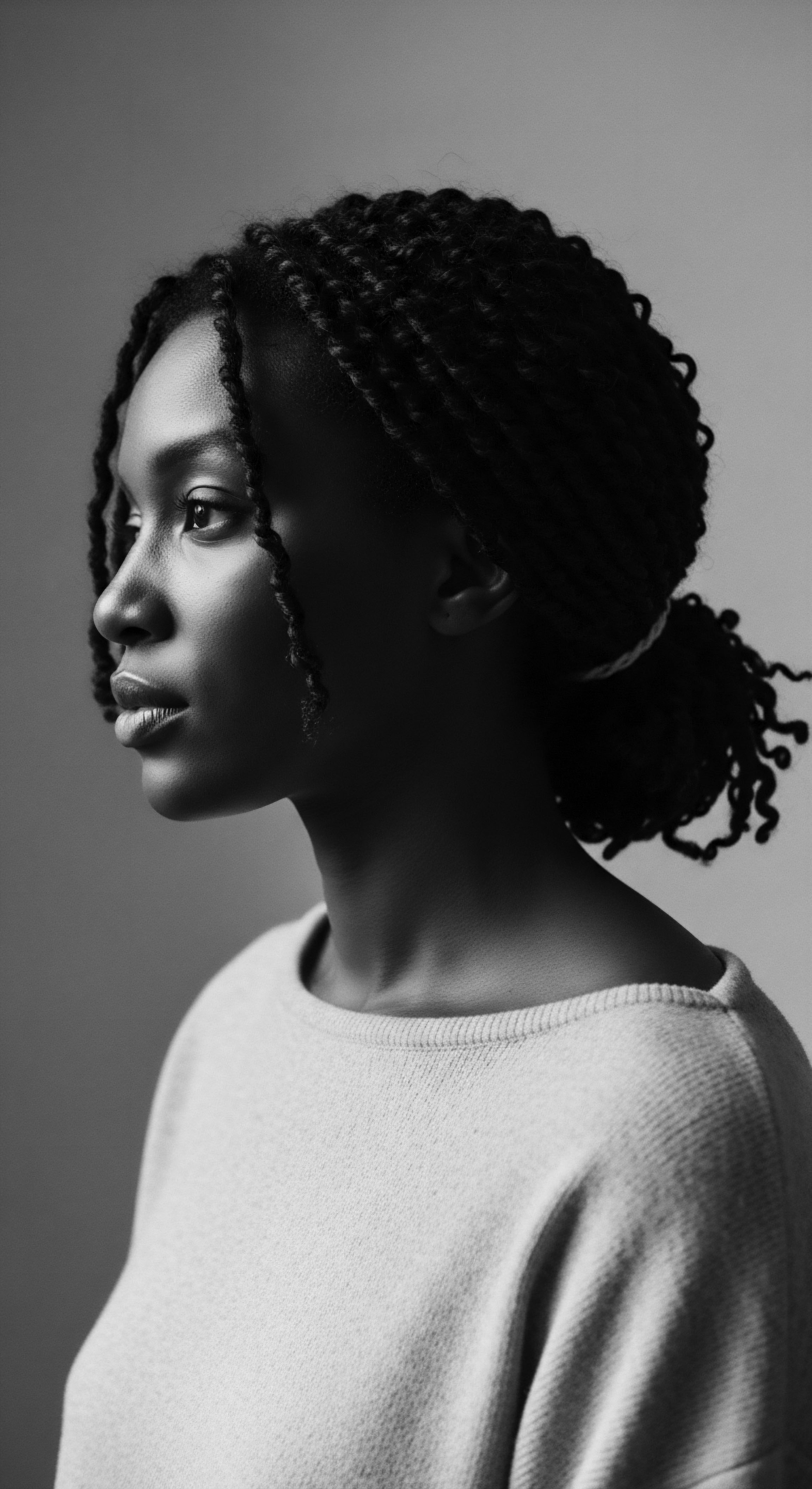
Reflection on the Heritage of Follicle Biology
As we conclude this exploration of Follicle Biology, a profound truth settles upon us ❉ the hair follicle is more than a biological entity; it is a keeper of stories, a silent witness to generations of resilience, identity, and profound care. Within the delicate architecture of each follicle lies an echo of the ancestral past, a testament to the enduring spirit of textured hair heritage. The journey from the cellular intricacies of the dermal papilla to the vibrant expression of a coiled strand is a narrative of life, continuity, and cultural significance.
The ‘Soul of a Strand’ ethos, which guides Roothea’s living library, finds its deepest resonance within the follicle. It reminds us that every hair, every curl, every wave carries the legacy of those who came before. The practices of our ancestors, born from necessity, intuition, and a deep connection to the earth’s bounty, were, in their own way, an applied Follicle Biology.
They understood, through observation and inherited wisdom, the rhythms of growth, the need for protection, and the profound connection between a healthy scalp and flourishing hair. Their hands, anointing with oils, braiding with precision, and styling with reverence, were nurturing the very source of hair, ensuring its vitality for future generations.
This journey through Follicle Biology compels us to look at our hair not just as an aesthetic feature, but as a living bridge to our heritage. It encourages a gentle hand, a listening ear to the whispers of our follicles, and a mindful approach to care that honors both scientific understanding and ancestral wisdom. The challenges faced by textured hair, historically and contemporarily, are often rooted in a lack of understanding or respect for the unique biological realities of its follicles. Yet, within these challenges lies an opportunity for profound connection and reclamation.
The follicle stands as a symbol of unending renewal, a small but mighty force that continues to produce, adapt, and express the rich diversity of human experience. In caring for our follicles, we are not simply tending to our hair; we are honoring a lineage, affirming an identity, and ensuring that the stories held within each strand continue to be told, vibrant and unbound, for all time. This ongoing dialogue between the biological and the ancestral, between science and soul, is the enduring legacy of Follicle Biology within the tapestry of textured hair heritage.
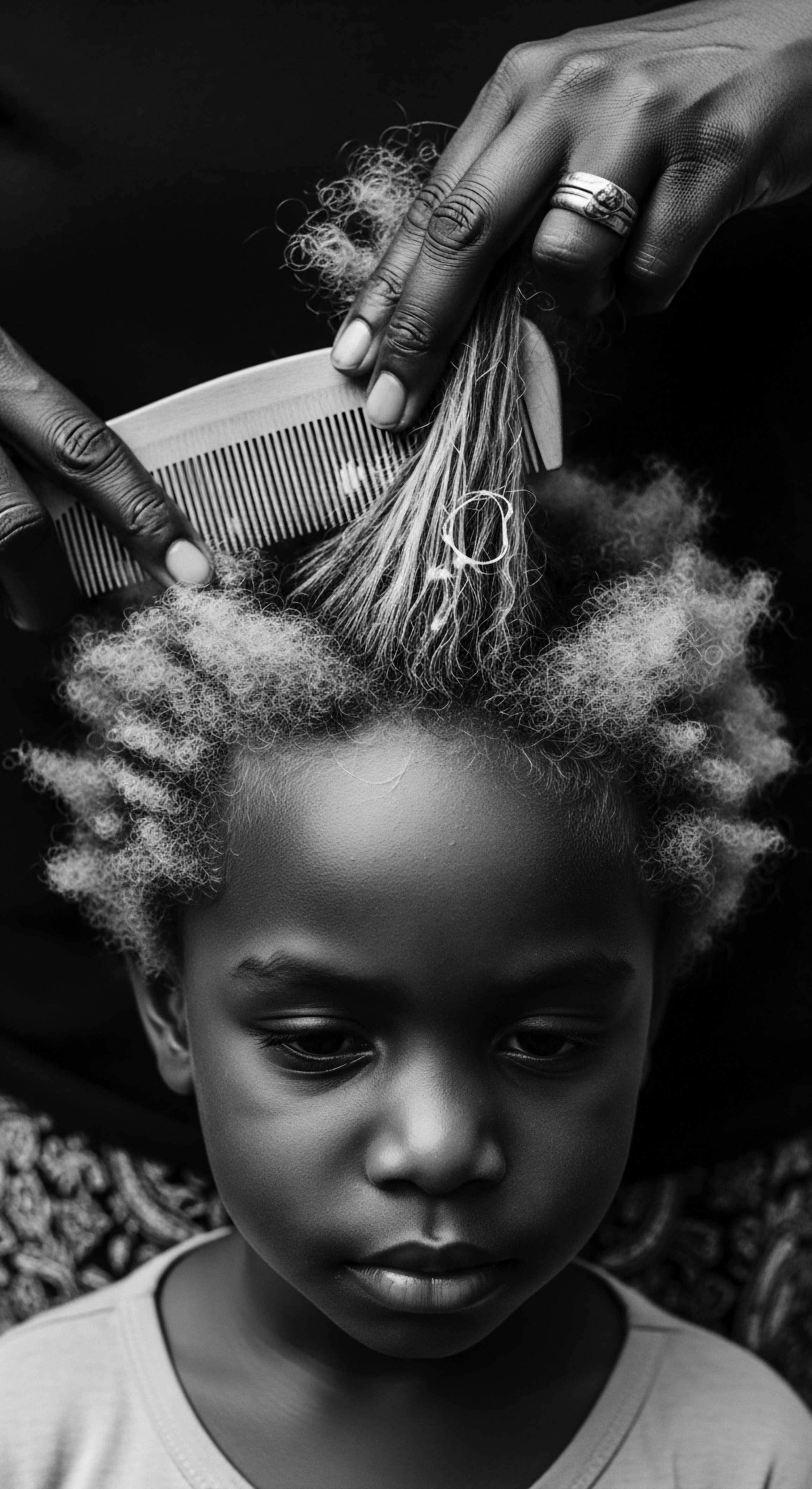
References
- Dawber, R. P. R. (1997). Diseases of the Hair and Scalp. Blackwell Science.
- Goldsmith, L. A. & Lazarus, G. S. (2000). Fitzpatrick’s Dermatology in General Medicine. McGraw-Hill.
- Khumalo, N. P. & Gumedze, F. N. (2018). African Hair and Scalp ❉ A Scientific Perspective. Springer.
- Paus, R. & Cotsarelis, G. (2008). The Biology of Hair Follicles. New England Journal of Medicine, 359(14), 1479-1488.
- Randall, V. A. (2007). Androgens and Hair Growth. Dermatologic Therapy, 20(3), 184-199.
- Smith, J. L. (2018). Hair Story ❉ Untangling the Roots of Black Hair in America. St. Martin’s Press.
- Sperling, L. C. (2003). Hair Anatomy for the Clinician. Journal of Investigative Dermatology Symposium Proceedings, 8(1), 3-6.
- Tobin, D. J. (2006). Biochemistry of Human Hair ❉ The Search for a Signature. Journal of Investigative Dermatology Symposium Proceedings, 11(1), 15-23.
- Van Scott, E. J. & Yu, R. J. (1998). Alpha Hydroxy Acids ❉ Science and Therapeutic Use. Dermatologic Clinics, 16(4), 853-864.
